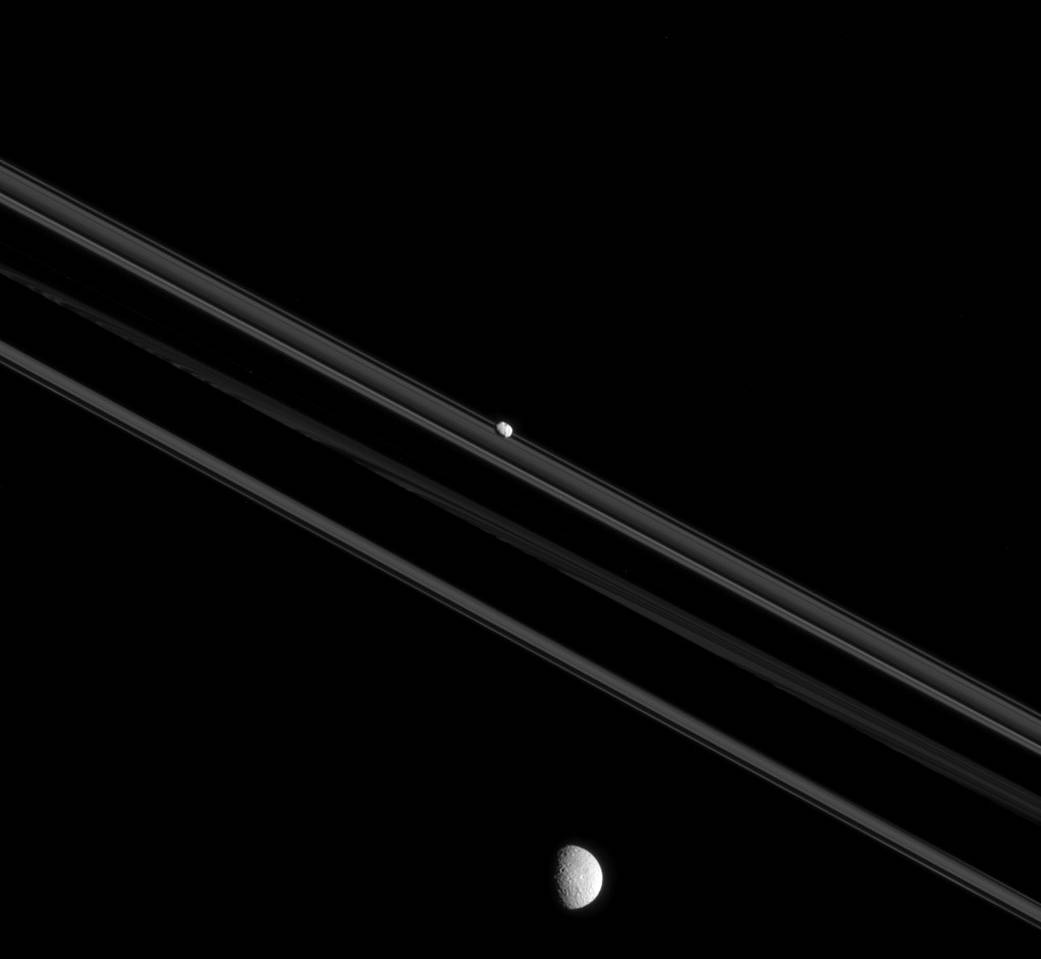Although Mimas and Pandora, shown here, both orbit Saturn, they are very different moons. Pandora, “small” by moon standards (50 miles or 81 kilometers across) is elongated and irregular in shape. Mimas (246 miles or 396 kilometers across), a “medium-sized” moon, formed into a sphere due to self-gravity imposed by its higher mass.
The shapes of moons can teach us much about their history. For example, one explanation for Pandora’s elongated shape and low density is that it may have formed by gathering ring particles onto a dense core.
This view looks toward the unilluminated side of the rings from 0.26 degrees below the ring plane. The image was taken in visible light with the Cassini spacecraft narrow-angle camera on July 26, 2015.
The view was obtained at a distance of approximately 485,000 miles (781,000 kilometers) from Pandora. Image scale is 3 miles (5 kilometers) per pixel. Mimas is 904,000 miles (1.4 million kilometers) from the spacecraft in this image. The scale on Mimas is 5.4 miles (8.4 kilometers) per pixel.
The Cassini mission is a cooperative project of NASA, ESA (the European Space Agency) and the Italian Space Agency. The Jet Propulsion Laboratory, a division of the California Institute of Technology in Pasadena, manages the mission for NASA’s Science Mission Directorate, Washington. The Cassini orbiter and its two onboard cameras were designed, developed and assembled at JPL. The imaging operations center is based at the Space Science Institute in Boulder, Colorado.
For more information about the Cassini-Huygens mission visit http://saturn.jpl.nasa.gov or https://www.nasa.gov/cassini . The Cassini imaging team homepage is at http://ciclops.org .
Credit: NASA/JPL-Caltech/Space Science Institute



























